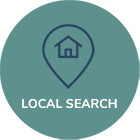Allowed Amount
The maximum amount on which payment is based for covered health care services. This may also be called an “eligible expense,” “payment allowance” or “negotiated rate.” If your health care provider charges more than the allowed amount, you may have to pay the difference (see Balance Billing).
Annual Household Income
The total income for a family in a calendar year (See MAGI).
Appeal
A request for your health insurer or plan to review a decision or a grievance again (usually in regards to whether or not a service is covered).
Balance Billing
When a provider bills you for the difference between the provider’s charge and the allowed amount. For example, if the provider’s charge is $100 and the allowed amount is $70, the provider may bill you for the remaining $30. A preferred provider – one that is participating in your insurance company’s provider network – may not balance bill you for covered services.
Benefits
The health care items or services covered under a health insurance plan. Covered benefits and excluded services are defined in the health insurance plan’s coverage documents.
Healthy Montana Kids (Also known as Children’s Health Insurance Program [CHIP])
An insurance program jointly funded by the state and federal governments that provides health insurance to low-income children and pregnant women in families who earn too much income to qualify for Medicaid but who cannot afford to purchase private health insurance coverage. In Montana, this program is called Healthy Montana Kids (HMK).
Claim
A request for payment that you or your health care provider submits to your health insurer after you receive items or services that you believe are covered by your plan.
Co-pay/Co-insurance
The amount of money that you have to pay for a service you receive that is covered under your health plan. This amount is usually due when you receive the service. A Co-pay or co-insurance is considered part of your out-of-pocket costs and is separate from premiums and deductibles. If the money you pay is a set amount (for example, a $15 payment to a doctor), it is called a co-pay. If the money you pay is a percentage of the cost of the service (for example, 20 percent), it is called co-insurance.
Cost Sharing
The share of costs covered by your insurance that you pay out of your own pocket. This term generally includes deductibles, co-insurance, and co-payments, but it doesn’t include premiums, balance billing amounts for non-network providers, or the cost of non-covered services.
Deductible
The amount you must pay for covered health care services each year before your health insurance company will begin paying benefits. For example, if your deductible is $1,000, your plan won’t pay anything until you’ve met your deductible for covered health care services that are subject to the deductible. Deductibles are applied differently depending on the type of health insurance plan you have.
Dependent
Dependents are typically children or spouses/partners of insured individuals. When individuals or employees buy health insurance, they usually have the choice to buy a plan that covers their spouse, partner or children.
Excluded Services
Health care services that your health insurance or plan doesn’t pay for or cover.
Formulary
A list of drugs your insurance plan covers. A formulary may also include how much you pay for each drug. If the plan uses “tiers,” the formulary may list the tier of each drug. Formularies may include both generic drugs and brand-name drugs.
Grievance
A complaint that you communicate to your health insurer or plan.
Health Insurance
A contract that requires your health insurer to pay some or all of your health care costs in exchange for a premium.
Hospital Outpatient Care
Care in a hospital that usually doesn’t require an overnight stay.
Insurance Network
The facilities, providers and suppliers that your health insurer or plan has contracted with to provide health care services.
Modified Adjusted Gross Income (MAGI)
The figure used to determine eligibility for lower costs in the Marketplace, Medicaid, and CHIP. Generally, modified adjusted gross income is your adjusted gross income plus any tax-exempt Social Security payments, interest, or foreign income that you may have.
Medicare
A federal health insurance program for people age 65 or older as well as certain younger people with disabilities. It also covers people with End-Stage Renal Disease (permanent kidney failure requiring dialysis or a transplant, sometimes called ESRD).
Open Enrollment Period
The period of time set up to allow you to choose from available plans, usually once a year. This year’s open enrollment begins November 1, 2022, and ends January 15, 2023.
Out-of-Pocket Costs
Your expenses for medical care that aren’t reimbursed by insurance. Out-of-pocket costs typically include deductibles, coinsurance and copayments for covered services, plus all costs for services that aren’t covered.
Preauthorization
A requirement that certain services, treatments, medications, and equipment be approved in advance by the insurance company, except in emergencies.
Preferred Provider
A medical provider who has a contract with your health insurer or plan to provide services to you at a discount. Check your policy to see if you’re allowed to see all preferred providers or if, instead, your health insurance or plan has a “tiered” network and you must pay extra to see some providers.
Premium
The amount that must be paid for your health insurance. You and/or your employer usually pay it monthly.
Premium tax credits (also called Advanced Premium Tax Credits or APTC)
Federal tax credits that will reduce your monthly health insurance bill. Nearly 85 percent of Montanans who bought health insurance through healthcare.gov for 2014 received a tax credit to bring down their costs.
Preventive Services
Routine health care that includes screenings, checkups, and patient counseling to prevent illnesses, disease or other health problems.
Primary Care
Health services that cover a range of services, including prevention services, wellness checks, and medical treatments for common illnesses. Primary care providers include doctors, nurses, nurse practitioners and physician assistants. These providers often maintain long-term relationships with their patients and treat a broad range of health-related issues. They may also coordinate your care with specialists.
Provider Network
The doctors and other health care providers who have agreed to work with your health insurance company. Different kinds of plans have different rules about provider networks. Most require higher out-of-pocket costs if you go outside their network, while some won’t cover any care outside of their network at all.
Special Enrollment Period
A time outside of the open enrollment period when you and your family have the ability to sign up for health coverage. Most special enrollment periods are triggered by certain life events, such as marriage, the birth of a child, or the loss of a job. Gaining or continuing status as a member of an Indian tribe or an Alaska Native shareholder also allows you to sign up for health care coverage during the special enrollment period.



